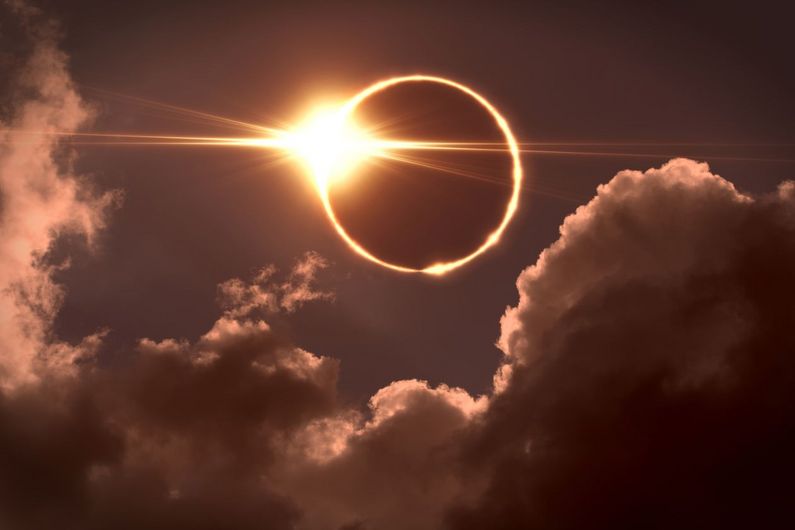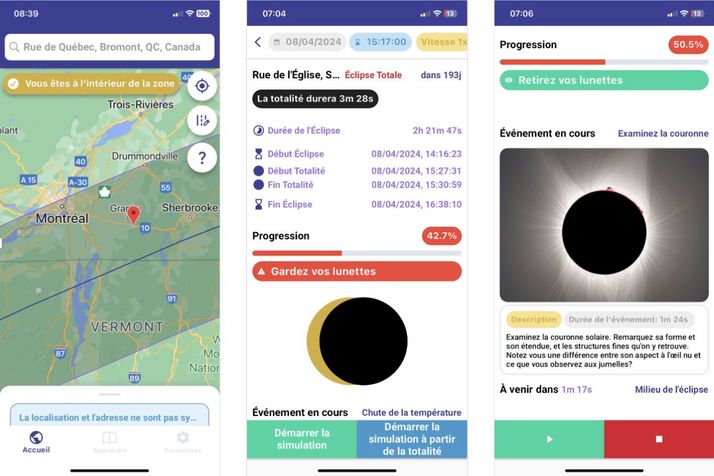Where's the best place to see the eclipse? There’s an app for that.
- UdeMNouvelles
03/27/2024
- Virginie Soffer
Developed by two UdeM computer-science students, Mon Éclipse simulates the path of the April 8 total eclipse of the sun.
Where will you be on April 8? Will it be somewhere you can see the total eclipse of the sun?
To find out, download the free Mon Éclipse app developed at Université de Montéal. It simulates the path of the eclipse and shows you where to watch.
You can also use the app to track the eclipse in real time and to get text and audio information, in French, about each stage of the process.
Jia Guo and Juba Foul came up with the idea while they were students in UdeM's Department of Computer Science and Operations Research (DIRO), under the supervision of professor Eugene Syriani.
The Fédération des astronomes amateurs du Québec (FAAQ) had asked the DIRO to design an eclipse app, and second-year students Guo and Foul were chosen because they had the right computer skills and an interest in astronomy.
Together, they developed the computational algorithms and the interface to run Mon Éclipse. It was the first time they'd created an app for use outside the walls of academe.
The time of the eclipse will vary depending on your geographic location.
At UdeM’s CEPSUM sports centre, the eclipse will begin at precisely 14h14min24s and end at 16h36min49s. The total eclipse will last one minute and 13 seconds, from 15h26min53s to 15h28min06s.
At least one minute in duration
The duration of the total eclipse will also vary by location.
"In Montréal-Nord, it will last one minute, while in other parts of Montreal it may be as much as one-and-a-half minutes,” said Syriani. “Calculating the phases of the eclipse, from partial to total, involves complex algorithms, including a good deal of trigonometry."
Understanding and refining the calculation of these astronomical phenomena was a challenge for the students. There are software libraries with pre-defined algorithms but these are not always totally accurate. They need to be tested and adjusted.
"Sometimes it was much harder, because if you’re closer to the equator it isn’t the same algorithm as if you're in Canada," said Syriani. It was a complex process, he added; the developers had to thoroughly understand how the algorithms work in order to adapt them to different situations.
Developing a cross-platform app was another major challenge. Guo and Foul wanted to create one that could run on iOS, Android, PC or Mac. To avoid having to recode for each platform, they used technologies to autogenerate the app. This streamlined the deployment process and allowed them to use the same source code for all versions of the app.
Mon Éclipse is available to download for free at https://faaq.org/wp/2023/10/06/application-site-web-mon-eclipse/















